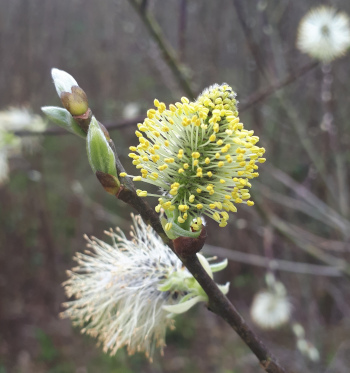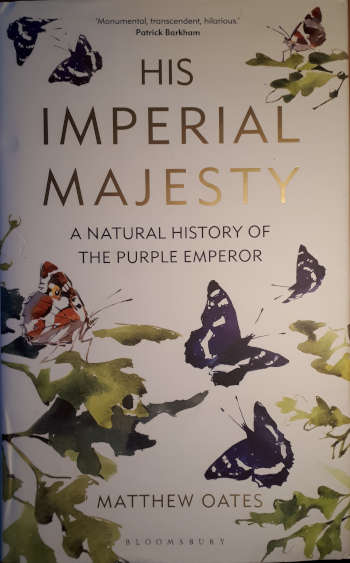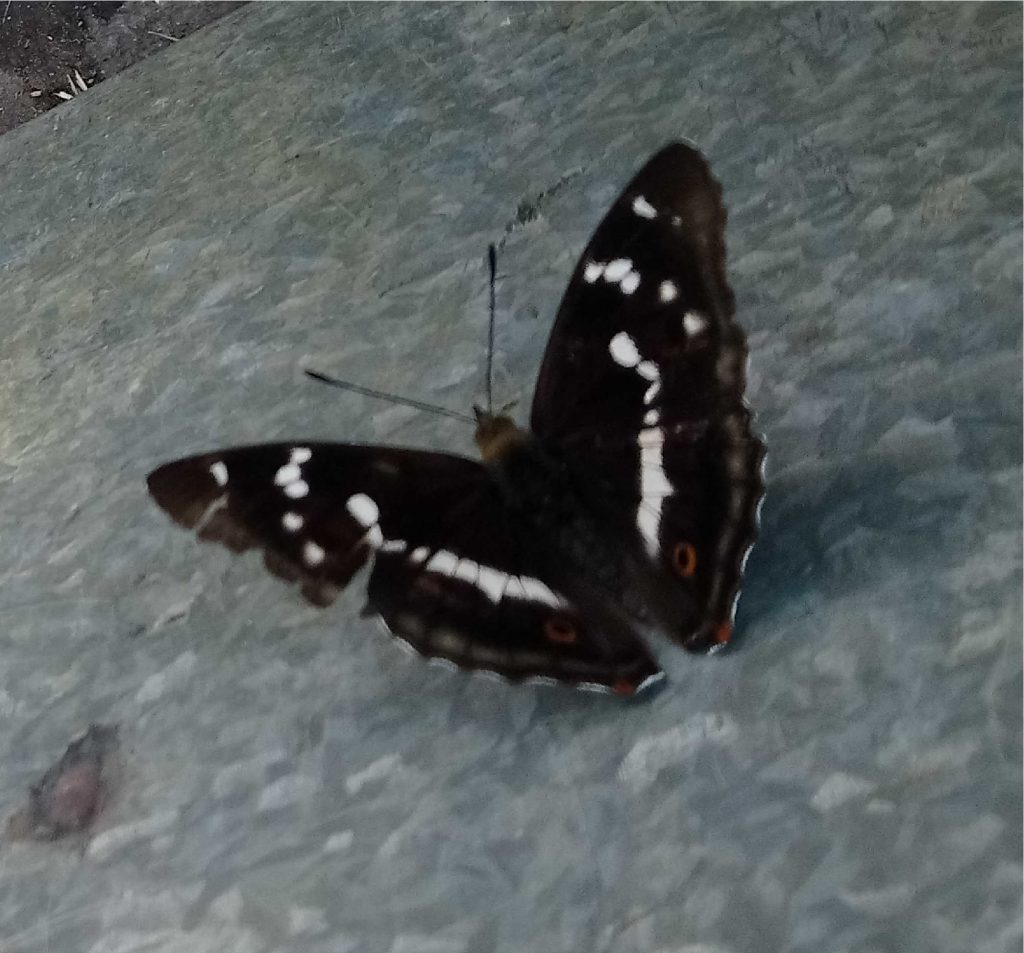For years I’ve been waging lowkey war on the sallow that grows in one hazel plantation we look after. (Sallow for simplicity, but I’m including ‘goat willow’, Salix caprea ‘grey willow’ S. cinerea, as well as hybrids of the two, under that umbrella).

Knowing sallow is an important part of the woodland ecosystem, I’ve never pursued eradication. Rather I’m after suppression within hazel coupes. My reason: sallow grows faster than hazel, can overstand it and when working a coupe, large sallows take a long time to deal with and produce a mountain of material that I can’t find a use for. I like some sallow amongst the hazel because the deer eat it first, but as I cut hazel I also cut all the sallow encountered. After two or three years, I’ll go back and cut the regrowth. Under the hazel canopy, even sallow struggles.
But in June 2019, one Saturday evening, we saw what we thought was a purple emperor butterfly. The weeks that followed brought several more definite sightings and much excitement. The arrival of emperors in this twenty year old plantation was somewhat revelatory, but it turns out they aren’t as rare as I thought.
One of the benefits of membership of the East Anglian Coppice Network is access to lots of lovely and knowledgeable people. Two Cambridgeshire members, Louise Bacon and Vince Lea, are, amongst other things, Wildlife Trust volunteers and extremely well up on wildlife matters. They reassured me that our management was probably not killing all the emperors in Bedfordshire and that in fact the species is spreading and is more common than previously thought – like some other species, it’s really difficult to observe so tends to be under recorded.
Enter Matthew Oates’ book His Imperial Majesty. A Natural History of the Purple Emperor. (Matthew Oates, Bloomsbury, 2020). It’s a good read, amusing and packed with information. Matthew is clearly a little crazy but fabulously dedicated to the Lepidopteron cause. When thinking about writing this piece I planned a review, but this approach seemed more pertinent to readers of this blog.

Mr Oates would prefer all sallow to be left untouched – I’ll quote his advice to managers of open grown (nonrideside) sallows, for nature conservation “first and foremost non-intervention; second, do nothing; third, leave the bloody things alone; fourth do something that actually needs doing instead.” Those of us who try to make money from coppice might not be able to follow this advice to the letter, but compromise should play a part. There must be something we can do, or indeed not do, to keep our hazel coppice management efficient whilst maximising opportunities for purple emperor breeding success.
So, what’s to be done? The purple emperor’s life cycle is complex – there’s no point in the year when they aren’t stuck on sallow, as larvae, eggs or pupae, and therefore at our mercy. The female is quite demanding of the type of sallow and the type of leaves of those particular sallows, on which she is prepared to lay (this is an area where Matthew Oates deserves special mention for his obsessive searching for invisible eggs, larvae and pupae).
Crucially, it seems, emperor females lay eggs on sallow that is older than five years. There’s the opportunity I was hoping for, which conveniently works with my own particular approach. Cut sallow in coupes along with the hazel at each rotation and again within five years. As well as the sallow within the hazel coupes we cut in rotation, our wood has a good number of twenty year old sallows around its edges. These are either left alone or coppiced or pruned irregularly if they are obstructing rides.

Hopefully this regime will result in a large and constant supply of perfect leaves in ideal locations on which those empresses will lay eggs each July and we will continue to enjoy seeing the adults. Anyway, in early April, when those large sallows are in full catkin bloomery and when the temperature’s right, their bumblehum is a joy that we definitely wouldn’t be without, emperors or not.
Any thoughts or experience on this issue? Please let us know.
